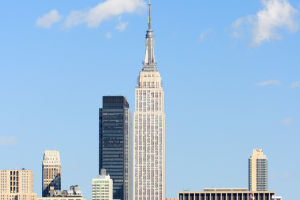At one time, most scientists believed that flowers predate the earliest pollinators, with insects such as butterflies and moths accompanying them. However, new research suggests that primitive butterflies existed long before the first flowering plants on Earth.
Which came first, the butterfly or the flower? How do scientists know?
To know whether the butterfly or the flower came first, you need to know which of the first butterfly and the first flower appeared on the earth. The most common method is to find fossils.
However, the structure of flowers is fragile and difficult to preserve, and only in the luckiest of circumstances will fossils be formed. The oldest flower fossil found so far is the fossil of an aquatic plant found in Spain, dating back 130 million years.
The development of molecular biology has brought convenience for scientists to understand the evolution of flowers. Combining molecular systematics and large fossil evidence, scientists collected 63 orders, 372 families, 793 plants, and 13,444 characteristic data, reconstructed the ancestral flower of angiosperm phylogeny based on the model, and found that it can be traced back to 140 million years ago.
What did these primitive butterflies eat before the flowers appeared?
Before the discovery of the fossilized wings of primitive lepidopteran insects, scientists generally believed that the emergence of insect mouthparts such as butterflies and moths was an evolutionary adaptation for sucking nectar. But if butterflies and moths with mouthparts appeared before flowering plants, what did they feed on? What is the reason for them to start to survive by sucking nectar?
Considering that the weather on earth at that time was much hotter and drier than it is now, insects such as butterflies and moths have a relatively large body surface area and are easy to lose water in their bodies. One of the guesses of scientists is that in order to adapt to the hot and dry climate at that time, primitive insects evolved. The siphonic beak facilitates the efficient fluid intake and replenishes rapidly lost water. That is, the beaks of early butterflies and moths were used to "drink".
Initially, they probably survived by sucking water droplets and exudates from damaged leaves and trunks. To this day, there are still a few butterflies that retain this original feature. For example, the dead-leaf nymph and the glass nymph mainly feed on rotting fruit or sap from worm-eaten wounds on leaf trunks.
The study found that lepidopteran insects have appeared on the earth at least 200 million years ago, while flowering plants began to grow on land 140 million years ago, 60 million years before the emergence of flowering plants, namely, angiosperms. Butterflies and moths have appeared.
bats and butterflies are not pests. They are industrious pollinators that support plant life, ecosystems, and agriculture.
Their importance has also drawn the attention of the Obama administration, which considers pollinators "essential to the nation's economy, food security and environmental health." About 75% of flowering plants require the help of bees to reproduce.
But now that pollinators are facing some difficulties, the relevant government agencies in the United States are trying to find the root of the problem so that they can provide a little help. For reasons not yet fully understood, bee colonies are collapsing and some agricultural industries may be negatively affected.
Monarch butterfly populations are in sharp decline, threatening one of North America's most spectacular animal migrations.
Bats also pollinate and disperse flowering plants, but bat populations are declining in North America due to habitat loss and the threat of a fungal disease.
After months of research, U.S. government agencies are recommending several new actions on public lands that provide habitat to help pollinators thrive.
1. Protect and restore wildflower habitats.
2. Make space for the honeycombs and nests of pollinators.
3. Provide the plants the butterfly needs.
4. Provide winter habitat for some other insects.
In a White House blog post, John Holdren, the president's assistant for science and technology, urged private landowners and homeowners to provide habitat for pollinators, and he suggested the following actions:
1. Provide gardens for pollinators, or do not disturb their natural habitat.
2. Use pesticides with caution.
3. Learn more about the types of pollinators in your area


